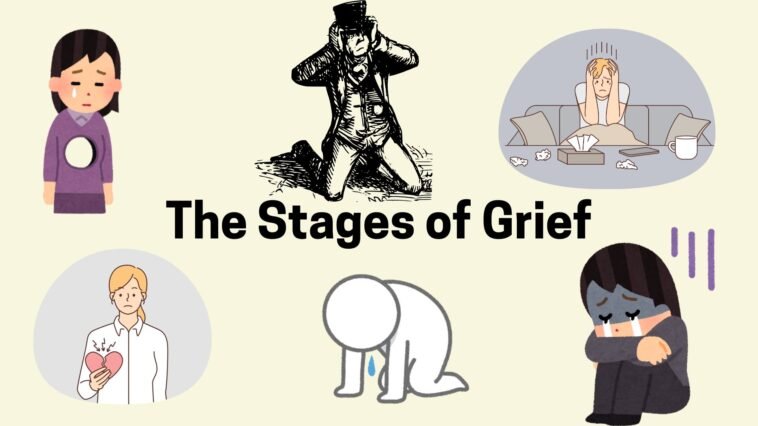Grief is an inevitable and universal experience. Every human being will encounter grief at some point in life, whether from the death of a loved one, the end of a relationship, the loss of a job, or some other significant life change. While grief is universal, it’s also deeply personal—everyone experiences and processes grief differently. One of the most common frameworks used to understand and navigate grief is the stages of grief, which help outline the emotions people may experience during this challenging time.
This article will provide a comprehensive examination of the stages of grief, including both the 5-stage and 7-stage models, discuss the complexities of grief, address frequently asked questions, and offer insights on coping strategies and support. By the end, you’ll have a thorough understanding of grief, its stages, and how to navigate this difficult emotional terrain.
Table of Contents
- What Is Grief?
- Are There 5 or 7 Stages of Grief?
- The 5 Stages of Grief
- How the Stages of Grief Can Overlap
- Other Types of Grief
- Coping Strategies for Grief
- FAQs About Grief
- Conclusion: Grief as a Journey, Not a Destination
What Is Grief?
Grief is the emotional response to loss. It is commonly associated with the death of a loved one, but it can also occur due to other significant life events, such as the loss of a relationship, job, or home, or even from moving through major life transitions like divorce or a diagnosis of terminal illness. Grief manifests in different ways depending on the individual and the nature of the loss. It can involve a complex mix of emotions including sadness, anger, guilt, confusion, and loneliness.
It’s important to remember that grief is not a sign of weakness or something to be “fixed.” Grieving is a natural, necessary process that allows individuals to come to terms with their loss and find a way to move forward.
Are There 5 or 7 Stages of Grief?
There is no single “correct” number of stages of grief. Most people are familiar with the 5 stages of grief, introduced by Swiss-American psychiatrist Elisabeth Kübler-Ross in her groundbreaking 1969 book, On Death and Dying. This model was originally developed to describe the emotional journey of terminally ill patients coming to terms with their own death, but it has since been widely applied to other forms of loss and grief.
In time, the 7-stage model of grief was developed to better reflect the complexity of grief, incorporating more emotional nuances such as shock, guilt, and reconstruction.
Both models can be useful in helping individuals understand their emotions, but neither is a rigid roadmap that everyone must follow. Grief is highly individual and nonlinear—some people may skip stages, repeat stages, or experience them out of order.
The 5 Stages of Grief
The 5-stage model of grief is often called the Kübler-Ross model, named after its creator. While the model is well-known, it’s important to note that it was never intended to be a one-size-fits-all approach. Kübler-Ross herself emphasized that these stages are not meant to be completed in a specific order, nor does everyone experience every stage. Instead, these stages are a way to describe the range of emotions that grieving individuals often experience.
Here are the five stages of grief:
- Denial
- Anger
- Bargaining
- Depression
- Acceptance
Let’s explore each stage in detail.
Stage 1: Denial
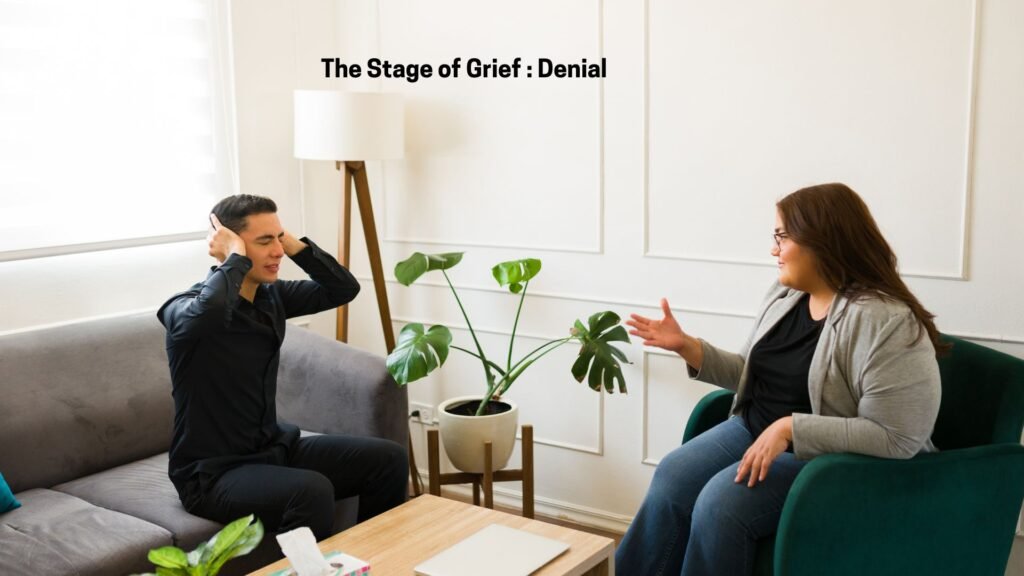
Denial is often the initial reaction to loss. It acts as a defense mechanism that allows the individual to absorb the shock of the loss at their own pace. During this stage, people may have difficulty accepting the reality of their situation. They might feel numb or disconnected from their emotions, and it’s common to hear statements like, “This isn’t happening” or “There must be some mistake.”
Denial allows the grieving person to cope with the immediate impact of the loss in small, manageable steps. By denying the full scope of the loss, the person avoids being completely overwhelmed by the emotions that follow. This stage often fades as the individual begins to process and accept the reality of the situation.
Examples of Denial:
- After a breakup: “This isn’t real. They’ll call and we’ll make up soon.”
- Following the death of a loved one: “She can’t be gone. I’ll see her tomorrow.”
- When diagnosed with a serious illness: “The doctors must have made a mistake. I’m not sick.”
Stage 2: Anger

As denial begins to wear off and the reality of the loss sets in, feelings of anger often emerge. Anger is a natural response to the feelings of helplessness and vulnerability that accompany loss. In this stage, individuals might direct their anger at anyone or anything—friends, family members, themselves, or even the person who died. They may also feel angry at the situation, the universe, or a higher power for allowing the loss to happen.
Although anger can feel overwhelming, it’s an important part of the grieving process because it allows the person to externalize their pain. Rather than feeling overwhelmed by sadness, anger can provide a sense of control and purpose, even if it’s directed at irrational targets.
Examples of Anger:
- After a job loss: “How could they fire me after all I’ve done for them?”
- After a divorce: “They’ll regret this. How could they hurt me like this?”
- After the death of a loved one: “Why did this happen? It’s so unfair. I hate them for leaving me.”
Stage 3: Bargaining
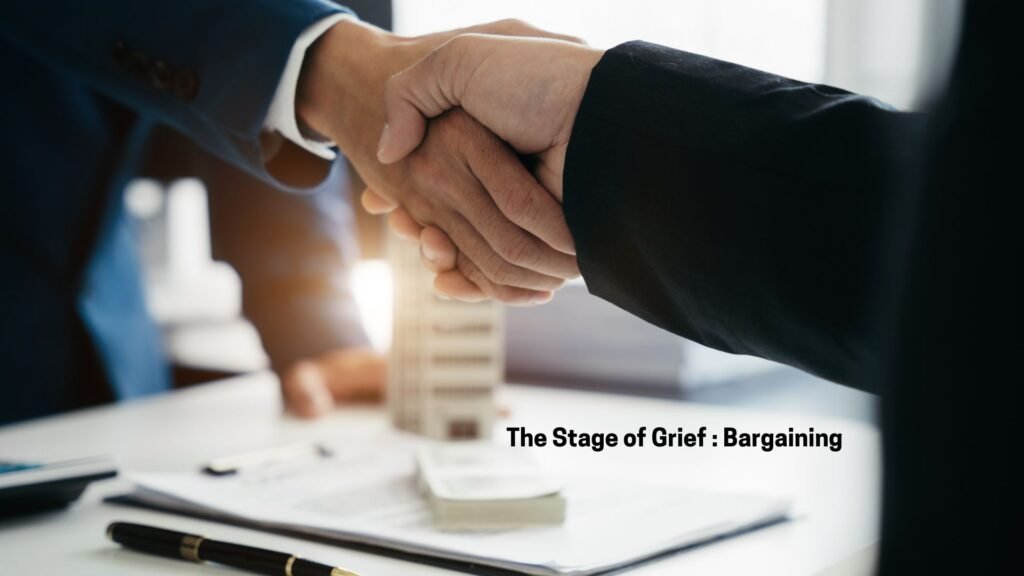
Bargaining often involves making promises or “deals” in an attempt to regain control or change the situation. It can take many forms, such as internal negotiations with oneself, bargaining with a higher power, or focusing on hypothetical “what if” or “if only” scenarios. This stage may be marked by feelings of guilt, as individuals try to think of ways they could have prevented the loss or done things differently.
Bargaining is often an attempt to postpone the inevitable reality of the situation and to protect oneself from the pain that comes with accepting it. This stage is also common in situations where there was no opportunity to say goodbye or resolve unfinished business.
Examples of Bargaining:
- After a breakup: “If I had just been more attentive, they wouldn’t have left me.”
- After a terminal diagnosis: “God, if you heal me, I’ll be a better person.”
- After the death of a loved one: “If only I had convinced them to go to the doctor sooner, they might still be alive.”
Stage 4: Depression
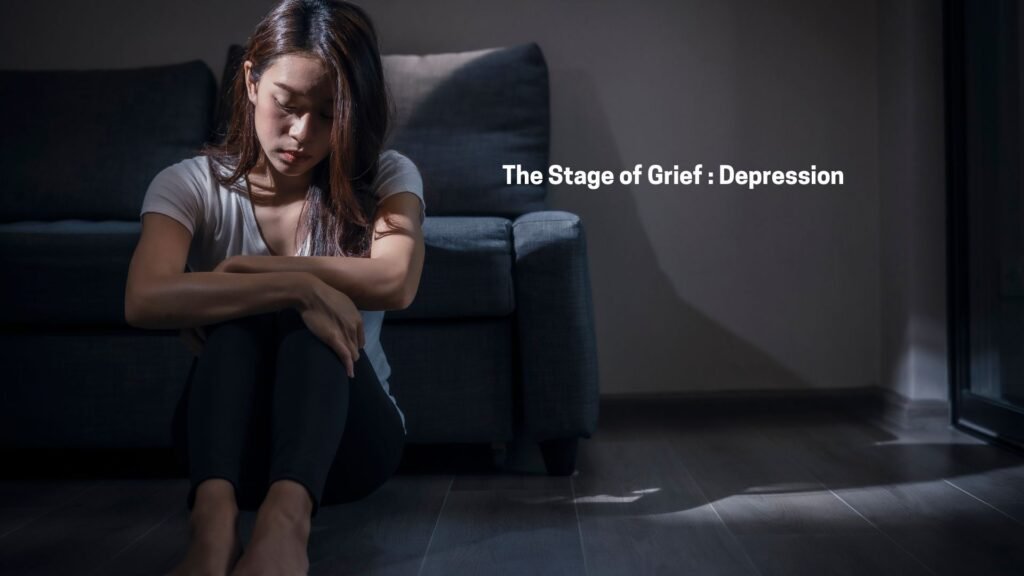
Depression is often considered the most challenging stage of grief. It’s the stage where the full weight of the loss is felt, and the grieving individual begins to confront the reality that the situation will not change. During this stage, people often feel overwhelmed by sadness, hopelessness, and a sense of emptiness. They may withdraw from friends and family, have difficulty finding joy in things they once enjoyed, and struggle with feelings of isolation.
While depression is often a normal and expected part of the grieving process, it’s important to distinguish between situational grief and clinical depression. Grief-related depression tends to ebb and flow, whereas clinical depression may persist and require professional intervention.
Examples of Depression:
- After the loss of a job: “What’s the point? I’ll never find another one.”
- After a breakup: “I’m never going to love anyone like that again.”
- After the death of a loved one: “I don’t know how to go on without them.”
Stage 5: Acceptance
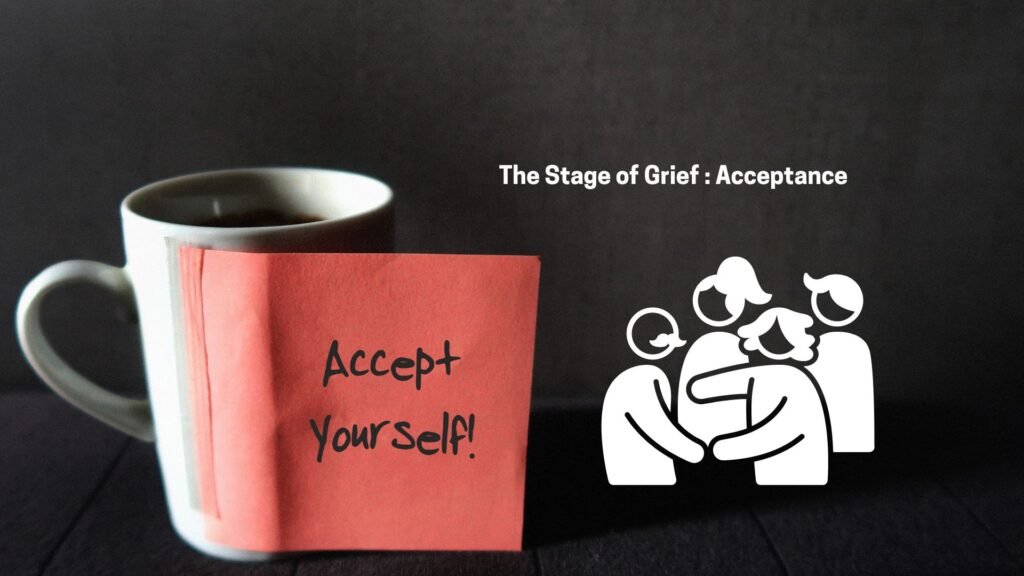
Acceptance is the stage where the grieving individual begins to come to terms with their loss. It’s not necessarily a happy or uplifting stage, but rather one of adjustment and moving forward. At this point, the person begins to understand that their life will be different but that they can find a way to live with this new reality. It doesn’t mean that they’ve “gotten over” the loss, but rather that they’ve reached a point where they can begin to focus on the future rather than the past.
In the Upward Turn, the intense emotions of pain, guilt, and sadness begin to subside. Although the person may still feel the weight of the loss, the grief starts to become more manageable, and they begin to find ways to adjust to life without their loved one or the thing they have lost. This stage is typically marked by a slight improvement in daily functioning, where the individual can begin to handle practical aspects of their life and grief.
During this stage, individuals might feel that they are starting to “turn a corner” emotionally. While there are still moments of sadness or reflection, they may begin to feel glimpses of hope or relief, and their focus may shift slightly from the loss itself to how they can adapt and move forward.
Examples of The Upward Turn:
- “I’m still sad, but I’m beginning to feel like myself again.”
- “It’s not as overwhelming as it was before. I can handle this.”
- “I’m starting to see the future again, even if it’s still hard to imagine it without them.”
Reconstruction and Working Through
Once the person has made the Upward Turn, they enter a stage of Reconstruction. In this phase, they begin to actively work through the practical and emotional challenges posed by the loss. This may involve adjusting to a new routine, creating new roles within the family, or finding new sources of meaning and purpose.
During Reconstruction, the individual starts piecing their life back together, often by seeking out solutions to practical problems. For example, they may find new ways to manage daily responsibilities, seek support from others, or engage in activities that help them heal. This stage is also about learning how to live with the loss rather than fighting against it.
In this stage, many people begin to focus on personal growth, learning, and healing. They may look for ways to honor the memory of the person or thing they lost while also finding new ways to thrive in their current situation. This can be an empowering stage, as individuals reclaim control over their lives and make meaningful progress in their emotional recovery.
Examples of Reconstruction and Working Through:
- “I’ve started going back to work and taking care of things that I let slide.”
- “I’ve found some new hobbies that make me feel more at peace.”
- “I’m working on creating a new normal for myself and my family.”
Acceptance and Hope
In the final stage of grief, Acceptance and Hope, the individual has fully acknowledged the reality of their loss and has made peace with it. While the pain of the loss may never fully go away, it becomes something the person can live with rather than something that dominates their life.
Acceptance does not mean forgetting the loved one or minimizing the impact of the loss—it simply means recognizing that life can go on and that there is still potential for happiness and fulfillment. In this stage, individuals often experience a renewed sense of hope for the future. They may find joy in activities again, form new relationships, or reconnect with their sense of purpose.
This stage is about integrating the loss into one’s life in a way that feels balanced and manageable. The person may never “get over” the loss, but they come to a place of emotional stability where they can look toward the future with hope and optimism.
Examples of Acceptance and Hope:
- “I’ll always miss them, but I’ve found a way to live without them.”
- “I’m ready to move forward and make the most of my life.”
- “I still think about them every day, but it doesn’t consume me anymore.”
How the Stages of Grief Can Overlap
It’s important to remember that the stages of grief are not a linear process. Many people experience the stages in different orders, and they may even revisit certain stages multiple times before moving forward. For example, someone may experience denial early on, then move through anger and bargaining, only to find themselves back in denial later as new aspects of their loss come to light.
Additionally, the grieving process doesn’t have a set timeline. Some people move through the stages of grief relatively quickly, while others take much longer. There’s no “right” way to grieve, and the path to healing is different for everyone.
Other Types of Grief
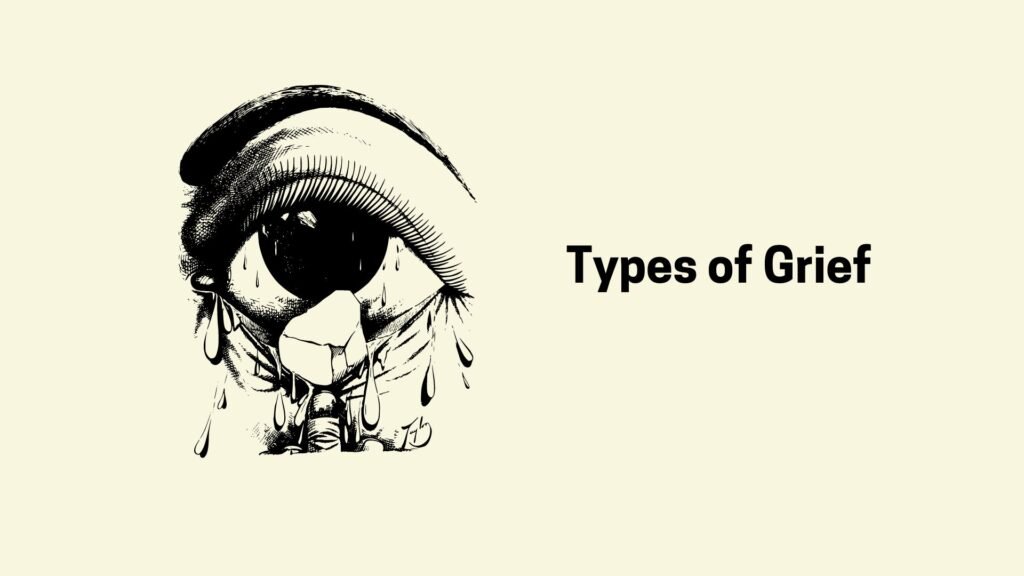
In addition to the typical stages of grief, it’s also worth considering that grief comes in many different forms. Some types of grief don’t follow the traditional patterns described in the 5- or 7-stage models. Understanding these variations can help individuals recognize their feelings and cope with them more effectively.
Anticipatory Grief
Anticipatory grief occurs when a person is grieving a loss that has not yet happened but is expected. This type of grief is common in situations where someone is caring for a loved one with a terminal illness or facing an impending life change, such as an anticipated divorce or job loss. In anticipatory grief, individuals begin to experience some of the emotions associated with the loss before the actual event takes place.
For example, a person caring for a terminally ill spouse may experience feelings of sadness, anger, or guilt before their spouse passes away. This type of grief can be confusing, as it often overlaps with feelings of hope or denial that the situation may still improve.
Complicated Grief
While most people eventually move through the stages of grief and find a way to integrate the loss into their lives, some individuals experience complicated grief, which is characterized by prolonged, intense grief that disrupts their ability to function. In cases of complicated grief, the person may feel “stuck” in their grief and unable to move forward. This can result in ongoing emotional pain, difficulty managing daily life, and challenges in forming new relationships.
Complicated grief may require professional intervention, such as therapy or counseling, to help the person process their feelings and develop healthy coping strategies.
Disenfranchised Grief
Disenfranchised grief refers to grief that is not openly acknowledged or supported by society. This type of grief often occurs in situations where the loss is not recognized as valid or significant by others. Examples include the grief of an ex-spouse, the death of a pet, or the loss of a relationship that was kept secret.
People experiencing disenfranchised grief may feel isolated or invalidated, as their grief is not publicly recognized. They may struggle to find support or express their feelings because they fear that others won’t understand or accept the legitimacy of their grief.
Coping Strategies for Grief
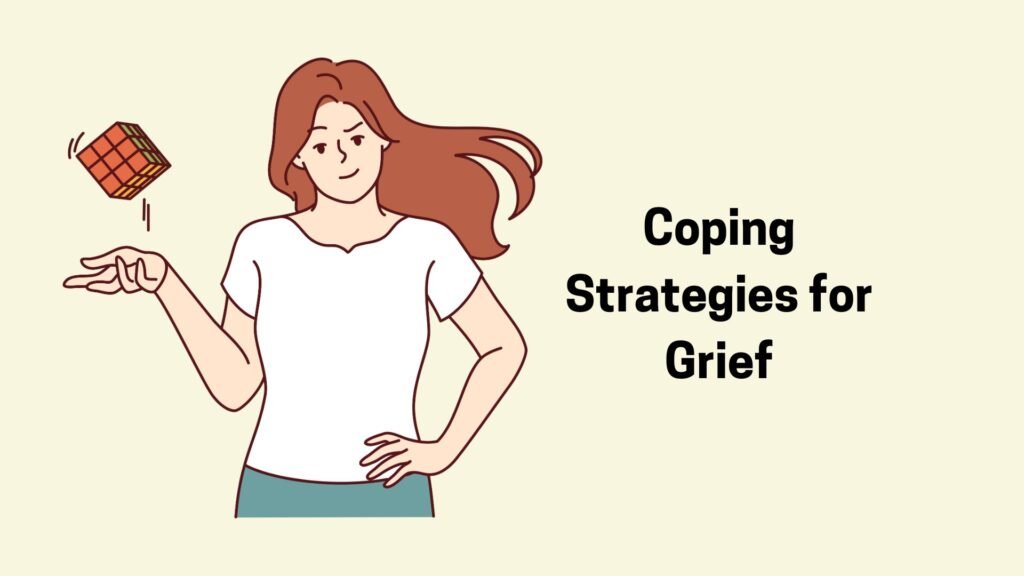
Grieving is a deeply personal process, and there’s no right or wrong way to cope with grief. However, there are strategies that can help individuals navigate their emotions and find a way to heal. Here are some effective coping mechanisms for managing grief:
1. Allow Yourself to Grieve
One of the most important steps in coping with grief is giving yourself permission to grieve. It’s okay to feel sad, angry, confused, or lost. Suppressing these emotions can prolong the grieving process, so it’s essential to allow yourself to experience them fully. Cry if you need to, talk about your feelings with others, or find a creative outlet to express your emotions.
2. Seek Support
Grief can feel incredibly isolating, but it’s important to reach out for support from friends, family, or professionals. Talking to someone who understands what you’re going through can provide comfort and help you process your emotions. Support groups, counseling, or therapy can also be valuable resources for those struggling with grief.
3. Take Care of Yourself
Grief can take a toll on both your mental and physical health, so it’s important to prioritize self-care. Make sure you’re eating well, getting enough sleep, and engaging in regular physical activity. While it may be difficult to focus on these things in the midst of grief, taking care of your body can help improve your emotional well-being.
4. Find Meaning in the Loss
While it’s natural to feel devastated by a loss, many people find comfort in finding meaning or purpose in their grief. This might involve creating a memorial for a loved one, engaging in activities that honor their memory, or finding ways to give back to others in similar situations. For some, spiritual or religious practices may also provide a sense of purpose and connection during the grieving process.
5. Be Patient with Yourself
Grief doesn’t follow a set timeline, and it’s important to be patient with yourself as you navigate the process. Healing takes time, and it’s okay to have setbacks or bad days. Be gentle with yourself, and don’t rush your emotions. Everyone grieves differently, and it’s important to honor your own unique journey.
6. Create New Routines
Loss often disrupts our routines, leaving us feeling unmoored. Creating new routines can help provide a sense of stability and purpose during the grieving process. Whether it’s establishing a morning ritual, finding a new hobby, or setting aside time each day for self-care, creating new patterns can help individuals regain a sense of control in their lives.
7. Seek Professional Help If Needed
If grief feels overwhelming or unmanageable, seeking help from a therapist or counselor can be a crucial step in the healing process. Grief counseling can help individuals process their emotions, address unresolved feelings, and develop coping strategies for moving forward. Professional support is especially important for individuals experiencing complicated grief or depression.
FAQs About Grief
1. How long does grief last?
There’s no set timeline for grief. Some people begin to feel better after a few weeks or months, while others may take years to fully come to terms with their loss. Grief is a highly individual process, and it’s important to allow yourself the time you need to heal.
2. Can grief come and go?
Yes, grief can come and go in waves. It’s not unusual to feel fine one moment and overwhelmed by sadness the next. Certain events, like anniversaries or holidays, may trigger intense feelings of grief, even if you’ve been feeling better.
3. Is it normal to feel angry when grieving?
Yes, anger is a normal part of the grieving process. It’s common to feel anger at the situation, at others, or even at yourself. Recognizing and expressing these feelings is a healthy part of grieving.
4. What if I don’t cry after a loss?
Everyone grieves differently. Some people cry frequently, while others may not cry at all. Not crying doesn’t mean you’re not grieving—it simply means that you process your emotions in a different way.
5. Can grief cause physical symptoms?
Yes, grief can manifest physically as well as emotionally. Common physical symptoms of grief include fatigue, headaches, digestive issues, and difficulty sleeping. It’s important to take care of your physical health during the grieving process.
Conclusion: Grief as a Journey, Not a Destination
Grief is a natural and necessary response to loss. While the stages of grief—whether in the 5-stage or 7-stage model—offer a framework for understanding the process, it’s important to remember that everyone’s journey through grief is unique. There’s no right or wrong way to grieve, and the timeline for healing varies from person to person.
Ultimately, the goal of grieving is not to “get over” the loss but to find a way to integrate it into your life while continuing to move forward. With time, support, and self-compassion, it’s possible to find peace, acceptance, and hope in the face of loss.
Please Subscribe Us to get updated with Qatar News, Saudi News, Kuwait News, Health News, UAE News, Iqama, Visa, Jobs, Banking and More

